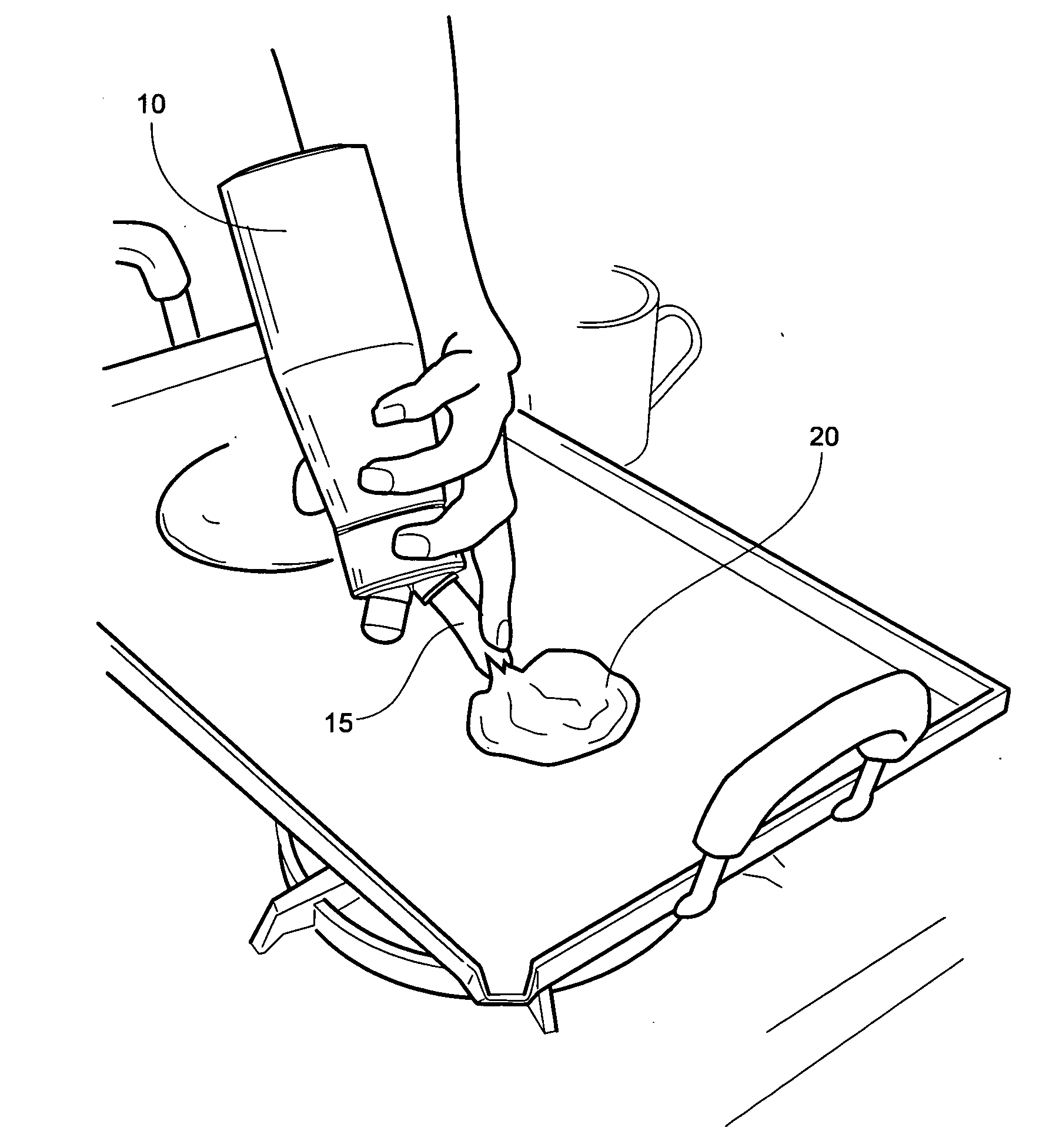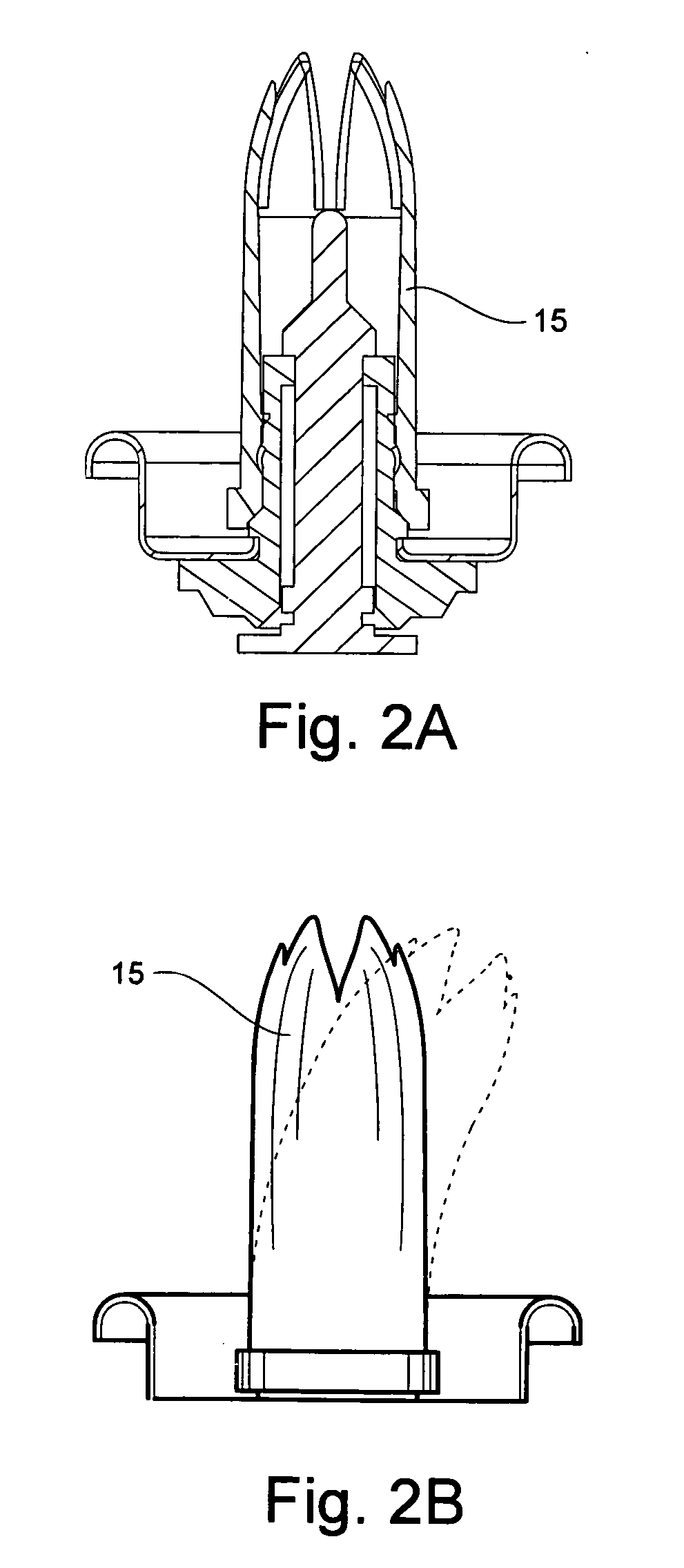Pasteurized uncooked batters and refrigerated ready-to-bake batters, and the methods of manufacturing
a technology of ready-to-bake which is applied in the field of manufacturing methods of uncooked batter and uncooked batter, can solve the problems of preventing the proper baking and formation of satisfactory grain and texture of baked products, and being more susceptible to microorganism spoilag
- Summary
- Abstract
- Description
- Claims
- Application Information
AI Technical Summary
Benefits of technology
Problems solved by technology
Method used
Image
Examples
example 1
Pasteurized Uncooked Wheat Flour Slurry—Irradiated Flour
[0049] 175 grams Wheat Flour that had been irradiated to 30 Kilograys was transferred from its sterile container in a sterile environment to a blender that had been sterilized. To this blender was added 263 grams sterile water and the flour was milled so as to produce a sterile uncooked wheat flour slurry having a pH of 6.3.
example 2
Pasteurized Uncooked Pancake Batter Made with Irradiated Flour
[0050] To 438 grams of the Sterile Wheat Flour Slurry from Example 1 was added in a sterile environment, a refrigerated and pasteurized blend containing 22 grams non-fat dry milk, 6.25 grams of sugar, 1.75 grams of sodium chloride, 6.15 grams of canola oil, 0.79 grams of Sodium Stearoyl Lactylate, and 23.75 gram whole eggs. The resulting batter had a Bostwick consistency of 19.6 cm / 30 sec., a water activity of 0.99, and a pH of 6.2. The resulting batter had a total plate count of less than 10.
example 3
Pasteurized Uncooked Ready-to-Bake Pancake Batter Made with Irradiated Flour and Using Encapsulated Leavening Agent
[0051] To 500 gram of Example 2 above which was kept at a refrigerated temperature of 38° F., was added under sterile environment conditions, 5.0 grams of a pasteurized encapsulated Sodium Bicarbonate that had no free Sodium Bicarbonate upon being suspended in water nor did this bicarbonate leach out into aqueous solutions at temperatures below 50° F. The bicarbonate from this encapsulated leavening agent was readily released at temperatures above 90° F. After blending of the leavening agent into the pasteurized uncooked batter, the resulting Ready-to-Bake Batter having a water activity of 0.99 and a Bostwick consistency of 20 cm / 30 sec, was filled into a standard milk carton container, sealed and kept refrigerated for 45 days. Cooking of the Ready-to-Bake batter on a 400° F. griddle for approximately 80 seconds on both sides, provided a satisfactory pancake of approxi...
PUM
 Login to View More
Login to View More Abstract
Description
Claims
Application Information
 Login to View More
Login to View More - R&D
- Intellectual Property
- Life Sciences
- Materials
- Tech Scout
- Unparalleled Data Quality
- Higher Quality Content
- 60% Fewer Hallucinations
Browse by: Latest US Patents, China's latest patents, Technical Efficacy Thesaurus, Application Domain, Technology Topic, Popular Technical Reports.
© 2025 PatSnap. All rights reserved.Legal|Privacy policy|Modern Slavery Act Transparency Statement|Sitemap|About US| Contact US: help@patsnap.com



